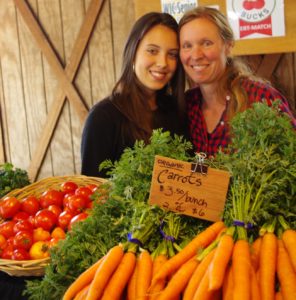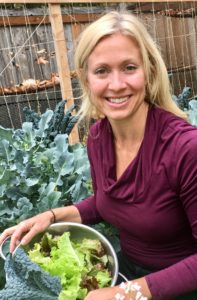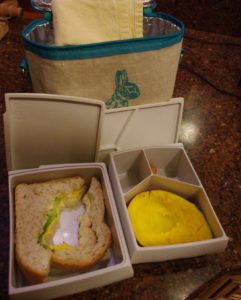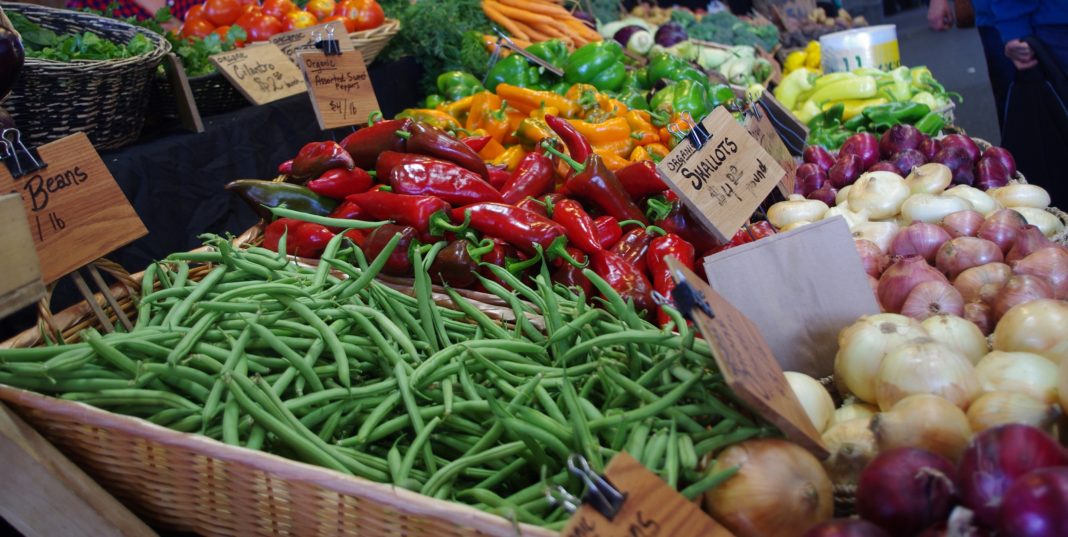It is still dark out, and the brightest light in the house is coming from your open refrigerator door. While your child sleeps, you are attempting to make their lunch. Again. You stand there looking for choices that they 1) will actually eat, 2) may like, and 3) will help them flourish through their day of school and social challenges. Oh, and 4) maybe brag to their friends about what an awesome parent you are. Take heart, dear parent, you are not alone.
 But before you reach in the deli drawer to make that umpteenth ham sandwich, let’s review.
But before you reach in the deli drawer to make that umpteenth ham sandwich, let’s review.
Move over Breakfast
How important is a child’s school lunch? “Probably the most important,” says Alison Hamza, “maybe even more important than breakfast.” Hamza is the right person to ask, a PA-C and NTP, she is also the author of Getting into Food: Whole Food Basics. “Lunch should be the most substantial and nutrient-dense meal of a child’s day. At lunch time, they have already been going for several hours and have several more to go – we want them to refuel with nutrient-dense foods so they have that energy they need.”
And if they don’t have that energy, the results can be tough on everyone. “You can talk to any teacher,” says Hamza, “and they will tell you their biggest issue is keeping kids focused. There is a lot of classroom management that takes away from the learning.”

Making Good Food Fun
Lowering the sugar and boosting nutrient-dense foods are key to Hamza’s lunch recommendations. “Turkey Pesto Rolls are turkey with pesto and rolled up and cut like sushi,” says Hamza. “I put dandelion greens in my pesto they love that. Anything cut up just makes it more fun. Hard boiled eggs already cut in half. Olives for healthy fat, right out of the can. I make a lot of fat bombs and they are fun! Put it in the mixer and have the kids roll the balls themselves.”
Hamza’s enthusiasm is contagious. “Make sure those lunches includes the healthy fats that are so good for the brain,” she advises. “Avocado, nuts and seeds, olives. And some fun ideas – guacamole with plantain chips instead of corn. Put nuts and seeds in a corner, sprouted seeds increase nutrient-density and they can digest it better.” But careful of raw almonds, Hamza warns, as they can give kids tummy aches.
And water. “Water, water, water.” Hamza insists. “71% of children are not hydrated, so the biggest thing is making sure they have water available.”

Love Our Local Farms
Our school districts have started including more local ingredients in their kitchens and Hamza recommends the same for packed lunches – keeping food as local and seasonal as possible. “If you compare an Earthbound organic carrot to a local one,” Hamza explains, “piece by piece, the local farm carrot has way more flavor. It is your local climate and it connects people to their food. We want kids to choose the local carrot, not just because it tastes sweeter, but because it is better for them.
Local farm owner, Jennifer Belknap of Rising River Farms, agrees. Her stand at the Olympia Farmer’s Market is overflowing with late summer produce. “Right now, I would definitely recommend the sweet bull horn peppers.” She explains that their name comes from their shape and that the golden ones are great for kids. “Broccoli is really good right now too,” says Jennifer, “especially if you pack it with a pizza dipping sauce.” Her daughter, Hazel, is 16 and helps at the stand. She began making her own lunches at an early age, “My mom would put in pesto and the other kids would be, like, ‘What is that?!’ and it was good,” she adds defensively.
Jennifer laughs, “When we made lunches, we also relied a lot on leftovers. We made extra the night before and used it in lunches. Extra pasta, rice, whatever we were eating the night before.”

Taking the Easy Road
Hamza recommends leftover solutions too: “The thermos is back in fashion, so put your left overs in there – don’t strain yourself to make those lunches every morning, instead make extra at dinner and warm it up and put it in a thermos. Then, having a conversation with them about eating their “strong” foods before “fun” foods. Reminding them that these foods are going to make you feel good. This is going to make you happy, this is going to make you smart.”
Setting Ourselves up for Success
Get the right gear. BPA-free food containers that are compartmentalized and leak-proof give you more options on what you can pack. Silicone cupcake liners, wooden skewers, small thermoses, all help pack alternate lunch choices.
We have all seen images of bento lunches online. Cut outs of veggies and fruits layered into recognizable cute animals. Possible? Yes, except for the recognizable part. Probable? Perhaps, with a lot of help. Historically, my version of bento is a half-sliced avocado or mango with a grapefruit spoon. But I am ready to learn. Small metal cutters can assist – priced from four dollars and up on Amazon, you don’t have to spend a fortune or battle with paring knives first thing in the morning.
And it turns out those cute, cut pieces are more than just another Etsy image. “Cutting veggies in certain ways can change the flavor,” explains Hamza. “Kids will always eat the curled up veggies. And let kids dip,” she adds, “though not necessarily Ranch, but homemade mayo or cashew instead so they get fat, salt, and their vegetable.” Hamza pauses, “And it’s fun and that is how it is supposed to be.”



















































